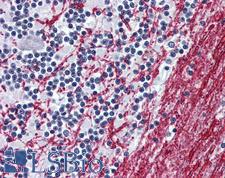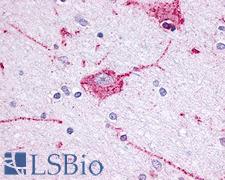Login
Registration enables users to use special features of this website, such as past
order histories, retained contact details for faster checkout, review submissions, and special promotions.
order histories, retained contact details for faster checkout, review submissions, and special promotions.
Forgot password?
Registration enables users to use special features of this website, such as past
order histories, retained contact details for faster checkout, review submissions, and special promotions.
order histories, retained contact details for faster checkout, review submissions, and special promotions.
Quick Order
Products
Antibodies
ELISA and Assay Kits
Research Areas
Infectious Disease
Resources
Purchasing
Reference Material
Contact Us
Location
Corporate Headquarters
Vector Laboratories, Inc.
6737 Mowry Ave
Newark, CA 94560
United States
Telephone Numbers
Customer Service: (800) 227-6666 / (650) 697-3600
Contact Us
Additional Contact Details
Login
Registration enables users to use special features of this website, such as past
order histories, retained contact details for faster checkout, review submissions, and special promotions.
order histories, retained contact details for faster checkout, review submissions, and special promotions.
Forgot password?
Registration enables users to use special features of this website, such as past
order histories, retained contact details for faster checkout, review submissions, and special promotions.
order histories, retained contact details for faster checkout, review submissions, and special promotions.
Quick Order
PathPlusTM OPRM1 / Mu Opioid Receptor Antibodies
Opioid receptor, mu 1 (OPRM1, MOR) is a receptor for natural and synthetic opioids including morphine, heroin, DAMGO, fentanyl, etorphine, buprenorphin and methadone. It has inhibitory action and functions to lower cAMP levels. In the brain, it regulates the excitability of neurons, and activation by various agonists such as morphine results in various emotional and physiological effects such as euphoria, nausea, lowered respiration and blood pressure, sedation, analgesia and constipation. In immunohistochemistry, OPRM1 has highest positivity in the cerebellum, basal ganglia, olfactory region, cerebral cortex and amygdala in the brain and is also highly expressed in seminiferous tubules in the testes. It has low levels of positivity in endocrine tissues.
References: The UniProt Consortium. Nucleic Acids Res. 47: D506-515 (2019); Nucleic Acids Res. 2016 Jan 4;44(D1):D733-45, PMID:26553804
3 PathPlusTM Antibodies



☰ Filters
Products
Antibodies
(3)
Type
Primary
(3)
Target
OPRM1 / Mu Opioid Receptor
(3)
Reactivity
Human
(3)
Bat
(1)
Bovine
(1)
Dog
(1)
Hamster
(1)
Monkey
(2)
Pig
(1)
Application
IHC
(3)
IHC-P
(3)
Host
rabbit
(3)
Product Group
GPCR Database Antibodies
(3)
PathPlus Neuro
(3)
Clonality
polyclonal pc
(3)
Format
Unconjugated
(3)
Epitope
C-Terminus
(1)
Extracellular Domain
(1)
N-Terminus
(1)
Publications
No
(3)

Neuroscience
Fast Shipping
OPRM1 / Mu Opioid Receptor Rabbit anti-Human Polyclonal (C-Terminus) Antibody
Dog, Bovine, Hamster, Pig, Bat, Human, Monkey
IHC, IHC-P
Unconjugated
50 µg/$395

Neuroscience
Fast Shipping
OPRM1 / Mu Opioid Receptor Rabbit anti-Human Polyclonal (N-Terminus) Antibody
Human
IHC, IHC-P
Unconjugated
50 µg/$395

Neuroscience
Fast Shipping
OPRM1 / Mu Opioid Receptor Rabbit anti-Human Polyclonal (Extracellular Domain) Antibody
Human, Monkey
IHC, IHC-P
Unconjugated
50 µg/$395
Viewing 1-3
of 3
product results











